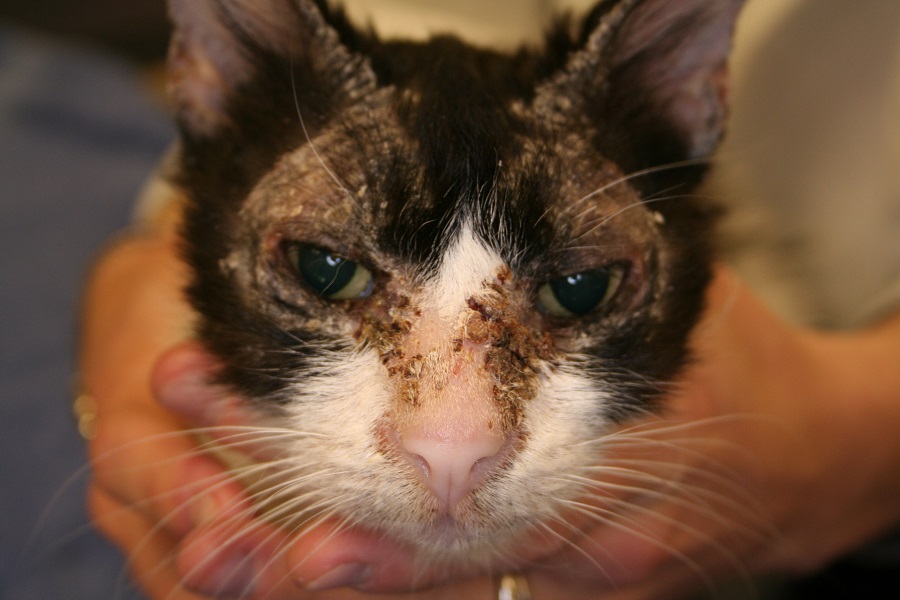Derm Spotlight: Autoimmune Skin Disease in Cats: Feline Pemphigus
What is it?
Pemphigus foliaceus is an autoimmune skin disease in cats. In general, it is an uncommon disease; however, pemphigus foliaceus is the most common out of all the autoimmune skin diseases. This disease occurs due to the immune system attacking its own skin cells. We do not always find the trigger.
What does it look like?
Cats with this disease may have pustules, crusts, and erosions that occur on the head, face, ears, paw pads, claw folds, and nipples. With time, it can spread to the rest of the body. The lesions are often symmetrical. Cats may also be itchy and sick (fever, lethargic, decreased/no appetite).

A cat with pemphigus foliaceus
Whom does it effect?
This disease is uncommon in cats. It can occur in any breed. This is often a disease of mid to older cats, but it can occur in cats of any age.
How is it diagnosed?
Definitive diagnosis requires a biopsy. A cytology can also be performed to look for a special type of cell called an acantholytic keratinocyte, which is suggestive of this disease but may not always be found.

Acantholytic keratinocytes
How is it treated?
Cats with this disease require medications that suppress the immune system. Medications most often used include: corticosteroids, chlorambucil, and cyclosporine. Due to the side effects of the medications needed to manage this disease, more frequent blood work monitoring is important. This disease typically requires medical management for life.
Additional Reading and Sources
References: 1. Campbell, Karen L.; Griffin, Craig E.; Miller, William H. Muller & Kirk’s Small Animal Dermatology, 7th Elsevier Mosby 2013., 447 – 448.
- Feb, 25, 2020
- Disease Spotlight


